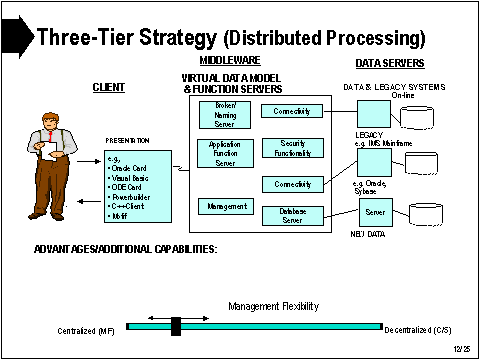| |
The Internet Based Intranet and Knowledge Management |
From an organizational point of view, the architecture of a modern Intranet is functionally composed of three layers, as follows (Figure 2):

Figure 2 [R7]
Presentation Layer (Client): This layer provides the user Interface and is always resident on the "client layers" of an Intranet system. This part of the system essentially provides the software that relates to what the user sees and how he or she interacts with the system.
Business Applications Layer (Middleware): This part of the system provides for the business logic and the organizational frameworks of the corporation.
Information Layer (Data Servers): The actual information that is relevant to the corporation and to its business processes resides in this layer. This is also the home of the more confidential data, and thus has to be guarded in a very strict manner.
These three layers may actually reside physically in different places in the Intranet network, depending on the exact configuration adopted. Progressively, companies are moving to three tier client-server solutions, the client being responsible for the presentation layer, the middle servers supporting the business applications layer, the top tier machines providing the database access to the corporate database machines. Other solutions are however in use, from two-tier client-servers to thin NC clients with fat middle servers.
The adoption of Intranet solutions in Corporations has provided the basis to satisfy most of the basic technical requirements for KM systems and products, as listed above. The standardization of intercommunication and access provided by the Internet technology has created an enormous global market for KM systems. There are innumerous niche needs to supply as well.
This fact has spurred the creation of many new KM products across each layer, or even integrated solutions that pass through all three. As mentioned earlier, most of these products go hand in hand with the Intranets and the Internet. The following section describes the fit between KM and the Internet, and shows how KM is at the tip of our fingers, once Intranets are in place.
We propose to denote these new Intranet-based Knowledge Management solutions as intraKNets. ã
| |